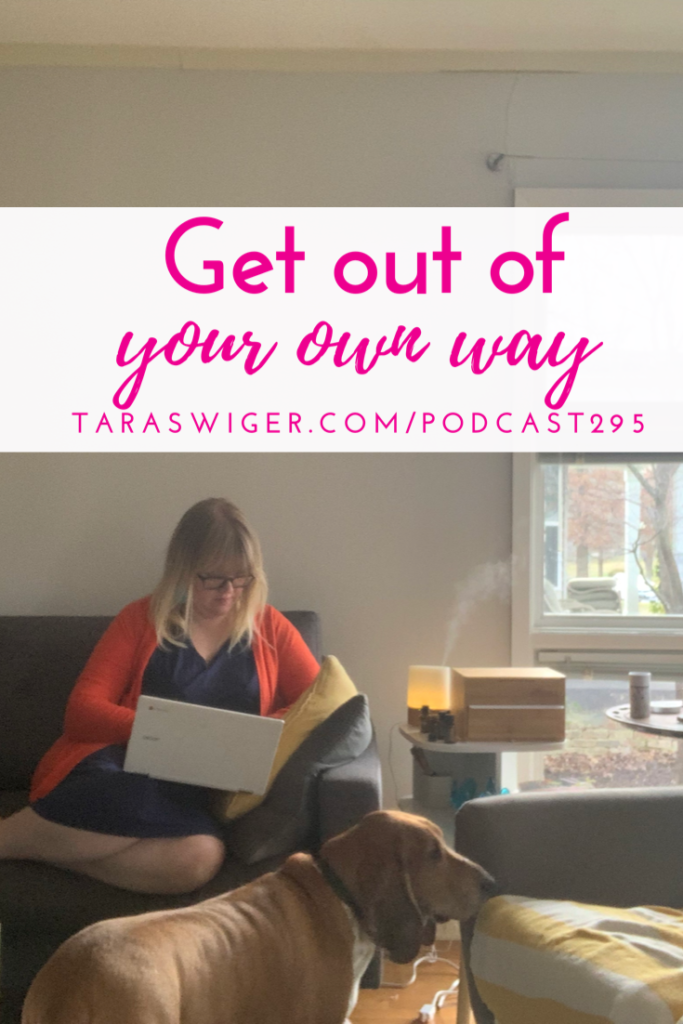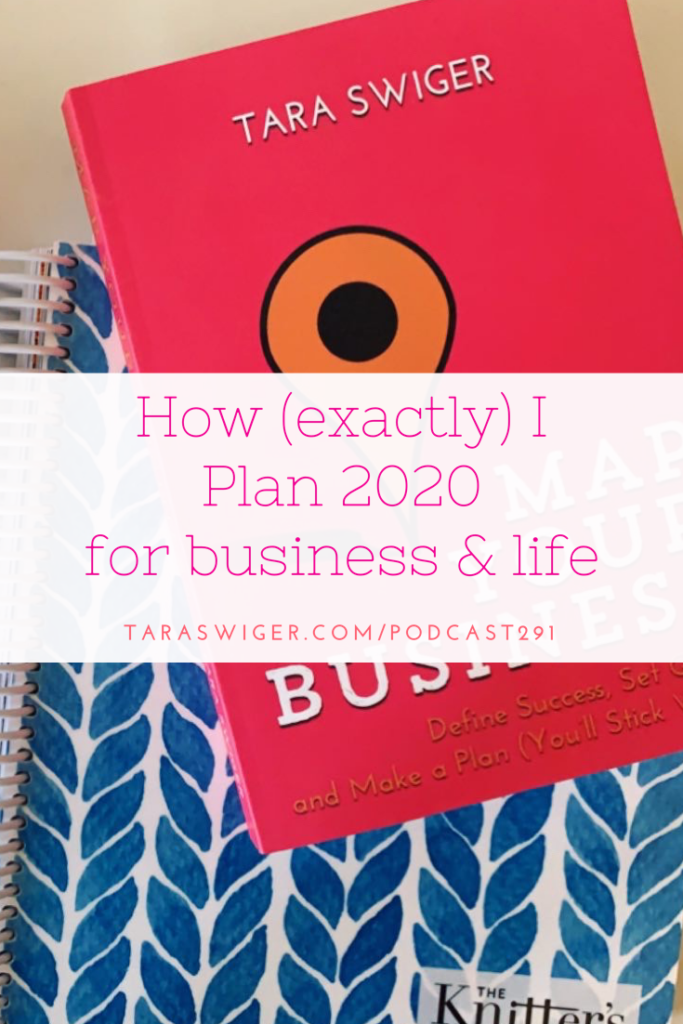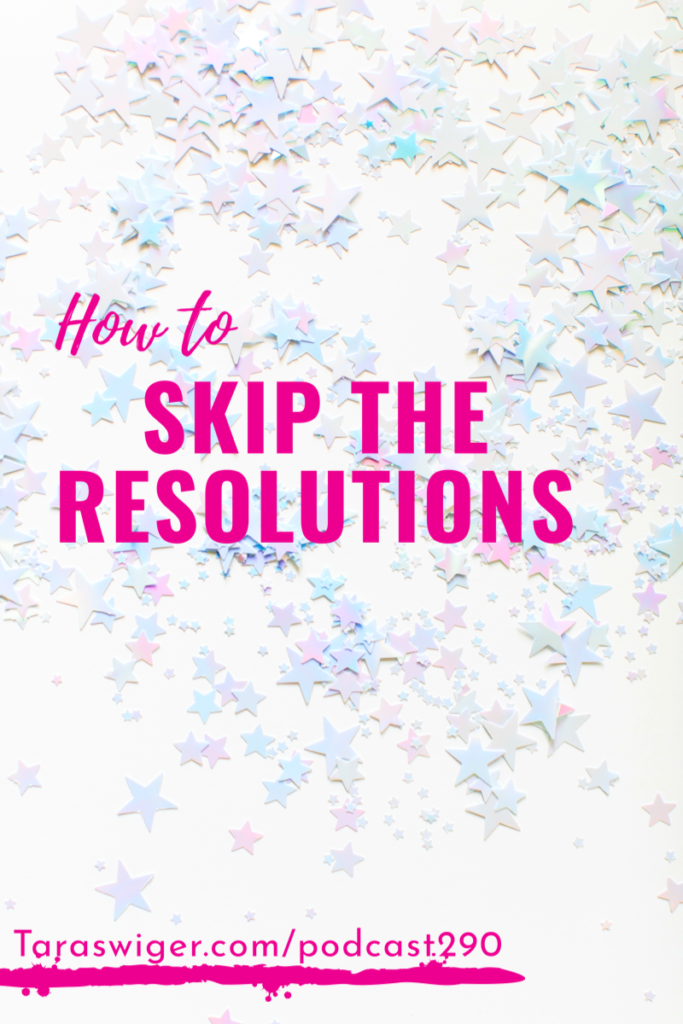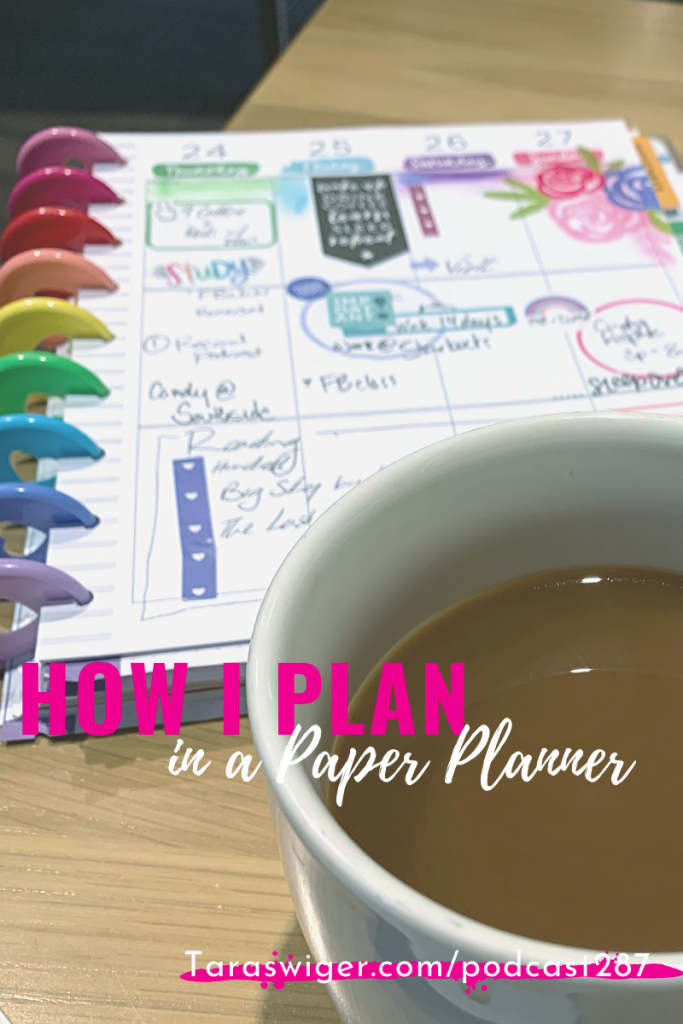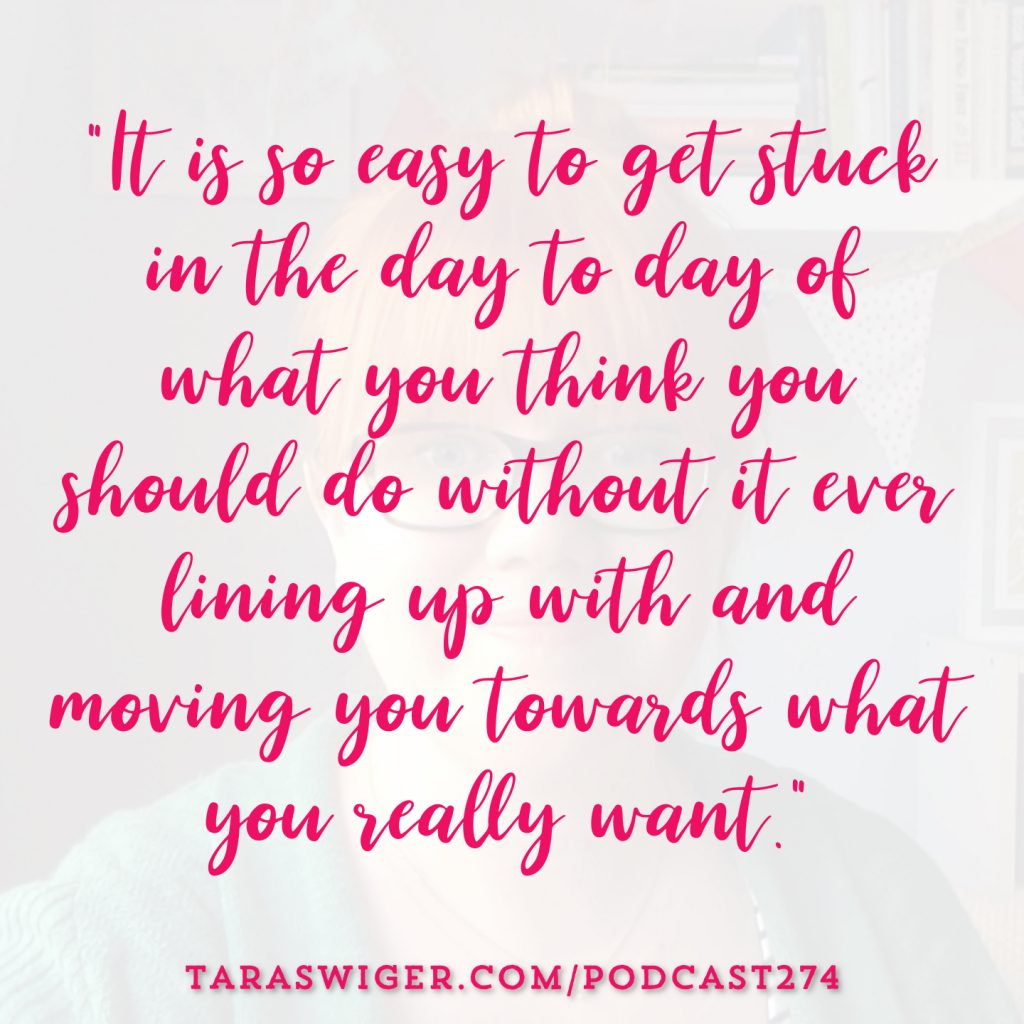Podcast: Play in new window | Download
Are you getting in the way of your handmade business moving forward? Yeah, it’s time to get out of your own way.
Lately we’ve been doing a series on how to make your 2020 goals come true. In episodes 292 and 293, I gave you lots of applicable, step-by-step advice on how to increase sales, so be sure to head over to TaraSwiger.com/launch if you missed that.
But as I said in those episodes, only a small percentage of people will follow through with the action plan.
Why?
Well, for some listeners, what I shared just isn’t applicable. Maybe you don’t have a business.
Maybe you are just starting and you don’t have any products yet.
For some listeners, growth isn’t their primary goal in 2020. Maybe you have more demand than you can supply. Or perhaps your work day has gone wonky, and what you want to work on this year is working LESS or taking more time off or stopping work at a certain time.
We’re not always in a place of growth.
Or maybe you’re like I was in 2019, where your life has been upended and your main goal is to just HOLD ON and try to figure out a new way to move forward (or even stay in the same place) with totally new circumstances. Last year my own focus wasn’t the growth of my business, it was the growth of my family.
Wherever you are is perfect.
But what about those listeners who DO have products, who have a way to sell them, and who have the goal to increase their sales in 2020?
Why don’t they follow through?
We hit on some of the reasons last week (in episode 294) – you may feel unfocused, feel like you don’t have enough time, or feel overwhelmed and stuck in self-doubt.
In other words, you’re not moving forward because YOU are holding yourself back.
Last week I gave you some homework – to write down HOW you were holding yourself back and WHY you might have done that.
(If you skipped the homework you can hit pause now and write it down, or even record it as a voice memo to yourself!)
Why are you doing this? Well, without hearing your answers, I can make a guess, because this is what stops me: Fear.
Fear of the unknown.
Fear that I won’t be safe.
Fear that everyone will realize I have no idea what I’m doing and they (you) will think it’s all a scam and everyone will hate me (and I’ll be broke and alone).
Fear that I’ll get it wrong, that people will see me get it wrong and then will all leave and my business will fall apart (and I’ll be broke and alone).
That’s kind of intense, right?
But that’s why this fear is so good at holding us back – we never look directly at it, so it just bubbles up underneath the surface and we feel a kind of uneasiness or nervousness or self-doubt. We don’t feel “quite right” so we don’t step forward.
What do you do about it?
Good news: We’ve already done the first step! The first step is to bring it to conscious awareness so we can SEE the fear, so it stops running the show from the background.
Then, we need to acknowledge it for what it is. It isn’t that WE suck. It isn’t that we need to do more or learn more or get more confident.
Fear holding you back is a NATURAL part of growth and exploration. Your fear is your sweet little brain trying to keep you safe. That’s it’s whole job! It’s saying “Hey there, I don’t know about that, I need to keep you alive so BACK AWAY FROM THE UNKNOWN.”
If you’ve experienced trauma (whether it was one-time acute trauma or ongoing trauma like an unsafe childhood), your brain is a SPECIALIST in spotting danger (maybe where there isn’t any!) and keeping you safe. This may be why you experience something that SEEMS simple (like talking to strangers in your craft booth, or posting a personal post on Instagram) as terrifying and flight-fight-freeze inducing.
Understanding and accepting this about yourself and your sweet little (confused) brain is vital to you moving forward. It shifts your focus from “pushing forward” to “gently finding a way forward.” Because when you push? Your fear pushes back. When you gently find a way to feel safe while doing the thing?” Your fear settles down.
Your fear just wants to be noticed and heard.
So we’ve identified it, we’ve recognized that it’s trying to keep us safe, but how do we hear it without letting it run the show?
Let it have it’s say – let your fear tell you what’s the worst that can happen.
Tim Ferris calls this “fear-setting”, it’s like the opposite of goal-setting, but is important if you’re going to move forward with a goal. Marie Forleo has a version of this exercise in her book Everything is Figureoutable. In other words, this works. So try it.
Pull out a piece of paper and answer:
What am I afraid of actually happening?
What is the absolute worst case scenario if that fear comes true?
And then what else horrible will happen?
And now that you’ve listened to your Fear, you’ve let it really unspool its dark fantasy, it’s time to apply some reality to your fear.
If that happened, the absolute worst case scenario… what would you do?
How could you come back from it?
What skills, abilities and experiences do you have that you could use?
When I’ve done this with Starship Captains, we always take a deep breath and feel a little shaken and a little relieved. It is SCARY to think of all that can go wrong! But I bet you noticed that your worst case scenario is actually kinda… figureoutable? There’s very little you’re going to do in your business that’s going to shake the core of what you value. Your Etsy shop isn’t going to kill your loved ones. Your email newsletter isn’t going to push your friends away. Unless you’re becoming a skydiving instructor, your business is unlikely to cause you bodily harm.
So, how do you feel? Deep breath! Do you feel a little more able to move forward?
(If not, did you do this in your head, or in writing? When you just think it, your brain often distracts you with other stuff and you don’t really go all the way. Write it down.)
Now, listen. This is not a one-time thing. If it were, I would be fearless and unwavering since the first time I did this back in 2006!
Instead, this allows us to take the NEXT STEP. Which is all we need for now.
But it is very likely the fear is going to jump back up when we come to the next unknown thing.
Elizabeth Gilbert says (in her book Big Magic, which is great) that we may not ever be able to get Fear out of the car, on our journey. But we CAN stop Fear from driving the car or grabbing the steering wheel or pumping the breaks. We can ride with Fear next us. We can acknowledge the work it’s trying to do (keep us safe), appreciate that, and still choose to not let it run the show. (This is a lot like driving with a screaming toddler in the backseat.)
Sooo, bad news! You’re going to have to do this a lot. I need to acknowledge and listen to my Fear every time I set a new goal. Every time I start a new project. Sometimes I have to do it before a speaking gig, when my nerves get bad! I had to do it when I became a foster mom! Every time I level up or my business levels up, I have to do it again.
But here’s what I hope you take from this podcast episode – YOU are holding yourself back, because your brain is trying to keep you ALIVE. YOU are a smart, capable, adorable human who is capable of so much more than you think, if you find a way to gently move past your stuck places. You don’t need to feel (or be) fearless to take the next step. You will build confidence through ACTION.
I am wishing you so much peace and courage this week.
How to listen
- You can subscribe to it on iTunes (If you do, leave a review!)
- You can listen to it using the player above or download it.
- Subscribe or listen via Stitcher (or subscribe in whatever you use for podcasts – just search “Explore Your Enthusiasm” and it should pop up!).

